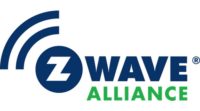
|
| Read “PERS on the Move” at www.SDMmag.com. PHOTO COURTESY OF MOBILEHELP |
With 76 million baby boomers starting to turn senior, and 65 million of them taking care of elderly family and loved ones, aging in place is a ripe arena for technology solutions. Home automation can play an important role in achieving that objective. An example would be an electronic lock that stays open too long. If the lock is hooked up to a home control system a message can be sent to the homeowner's adult children, who can either close it themselves or decide whether to go to investigate.
Recently, SDM Senior Editor Heather Young spoke with Mark Walters, chairman of the Z-Wave Alliance. In the Q & A below, Walters addresses the area of aging in place and how home automation can be an integral part of it.
SDM: Can you clarify with aging in place is and start positioning it within the smart home?
Walters: From Z-Wave’s perspective, and that of most integrators and alarm companies, it is important to be clear that aging in place is not about medical devices or medical telemetry. We're not talking about taking somebody's blood pressure or pulse. What we’re talking about is remote home management being used in specialized ways. It's the ability to create a set of rules for decision making that help care givers and the loved ones they look after. Our industry can use established technologies that it's already comfortable with and successful in selling to other demographics, and apply them to connected aging solutions that give both care takers and their loved ones a sense of security and dignity.
SDM: Can you talk about the application of smart home devices in an aging-in-place setting and give some examples?
Walters: Creating a connected aging application is really just a matter of the set up. An intelligent gateway with Z-Wave serves as the foundation. The external devices are already familiar, for instance, a motion detector. You'd set one up so that when it detects motion in the bedroom at night it signals the lights to turn on in the bedroom, hallway and the bathroom at 30 percent, because it's nighttime and we don’t want to blind the person. An application this simple cuts down on falls, which are not uncommon and are often dire.
To take this example a little further you'd create a rule on the gateway device that using this same motion detector says that if there’s no motion detected in the hallway or kitchen by 10 a.m., the system should send a text message to a loved one so they can check in, because it's unusual that nobody's up and around by that hour. The alert could also go to the monitoring company or the next-door neighbor.
In essence, what we are recommending is to use traditional home control devices like motion detectors, lighting controls, thermostats, and door locks to keep an eye out or monitor the activity in a home. You write a set of rules that says "this activity, or lack thereof, is abnormal", and defines what an appropriate interaction might be such as send a text to the care giver or send a 911 to the local monitoring agency.
SDM: Can you talk about the importance of aging in place applications?
Walters: The importance is obvious given the demographic trends. The population is aging and few family’s live with or close to their aging parents. One reality that's particularly heart breaking centers on falling. Because the elderly are prone to falling they buy these personal emergency response buttons (PERS) that your readership is familiar with; most of them sell and monitor them. When the users go to bed at night, they take them off and they put them on the bedside table. Then they get up in the middle of the night to go to the bathroom and they fall. It's always at night, it's typically in the bathroom, which is one of the worst places to fall, and their PERS button is on the table 25 feet away, and they can't get to it.
What if we improve on this? It's really true that an ounce of prevention is worth a pound of cure. What if they didn't fall because we turned on the lights on for them, on at 30 percent so we don’t blind them but still enough to keep them from tripping over their slippers? And what if, when the lights went on, we had started a timer, so if there's no one returning to bed in a reasonable time frame, we know that something's wrong? We can be notified immediately, get in there and help them out, and it's not two days later when we find them.
SDM: So the message is that, yes, those accessories, Z-Wave-enabled devices, can really create a more comprehensive system that allows you to better monitor loved ones, get better results and feel even more confident in helping people stay at home.
Walters: We're providing a useful, meaningful service that's completely real-world. To name another common scenario that I've heard from a number of different people, and from a number of different angles, and actually witnessed myself in my own family, is that elderly people "don't want to be a bother."
For example, a good friend of mine went over to visit his grandparent, walked into the house and it was like 47 degrees. It turned out that the furnace stopped working three days earlier, and the poor grandparent was bundled up with layers and layers of clothes. She could easily have gotten hypothermia or even pneumonia, but she didn't want to bother anybody. If there were a remotely monitored / controllable thermostat in that house, not only could we have made sure that the temperature was right, but we would have known right away that the house had gotten too cold. That's a new possibility of security that can be provided for both the caregiver and the loved one.
SDM: So the wisdom is for dealers and installers when they're thinking about these different Z-Wave-enabled products, if they're considering offering PERS, you're telling them don't stop at just the device, the actual PERS device. If you're going to offer PERS, take it a step further and offer a full service —a complete safety net.
Walters: Correct. If you're doing PERS, don't stop there. And if you're not doing PERS, you should be. Because I think it's pretty well-established that that's a good business and a genuine service, even though there's still lots of room for improvement. At the same time, you should be learning how to sell, install and develop these additional value propositions wrapped around traditional home control devices. You don't have to get into blood pressure cuffs. You don't have to get into connecting personal data to an outside entity like a doctor or homecare agency. Connected aging applications using established home control technologies gives both the loved one and the care giver tremendous value, without getting into the sticky world of medical devices and personal data.
SDM: Can you talk a little bit about the future of aging in place and automation technologies in the home?
Walters: In the future we will incorporate traditional home control type devices and sensors and use them to help us make decisions on whether something's right or something's wrong. Is what's happening in the home right now an abnormal pattern or is a normal pattern? The monitoring of patterns over time is extremely relevant. Research is starting to show if you keep track of somebody's living patterns and you see a shift in sleep patterns, or a shift in mobility or a shift in some other kind of pattern, that oftentimes suggests that there's an issue indicating a present or imminent problem. The problem could be acute, like a fall, or cumulative, such as an undiagnosed disease.
One of the toughest things about aging is determining when is the right time for somebody to have additional help. When is it time for Grandma to go to an assisted living facility? If you send Grandma to the assisted living facility too early, you've done two things. One, you've cost yourself a ton of money and two, you've just shortened her life. The unfortunate but hard fact is that most of the time, when you take somebody out of their home, their decline is rapid.
The other side of that is, if you don't send Grandma to the home when she needs to go, and she falls and she gets seriously injured the recovery can be very slow, if at all. So, there's an important time here where someone needs to make an informed decision. When is it time to bring in more assistance, whether it's in-home assistance or an assisted living facility? How do you make that decision?
If there were data that was being kept in the background by an intelligent gateway device, and living patterns were being observed, and data on those patterns collected and viewable, the case for everyone making the "right" decision becomes easier. Because the life patterns become quantifiable, and the wellness information is no longer just anecdotal. We all know the first two words out of any of our elderly loved ones mouths when we ask how they are — "I'm fine." That's often not the whole picture, and often, not even accurate.
This is a burgeoning area of research right now, and a potentially huge area of benefits. If we have data, objective data, that's being collected and then analyzed in some fashion that can help families make an informed decision as to when the person in home may have had a marked changed in their behavior— and what that change might indicate.
You can probably tell that I'm very passionate about this. We just have to figure out how to bring more of these benefits to the market. The basic technologies are mature. The market is certainly going to be there. Connected aging solutions are going to grow with the demographics; just as fast and just as big.



